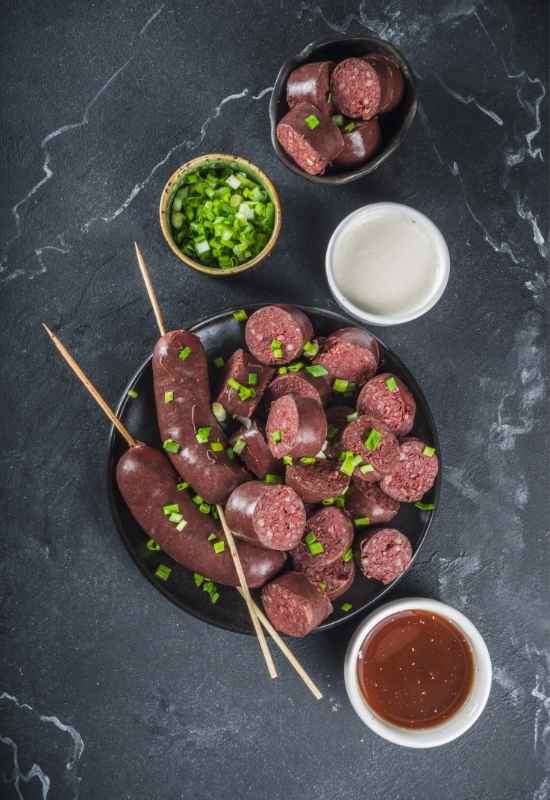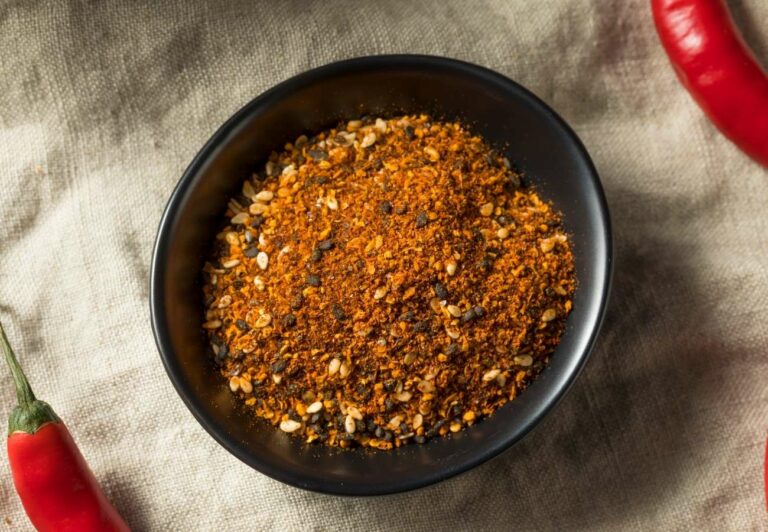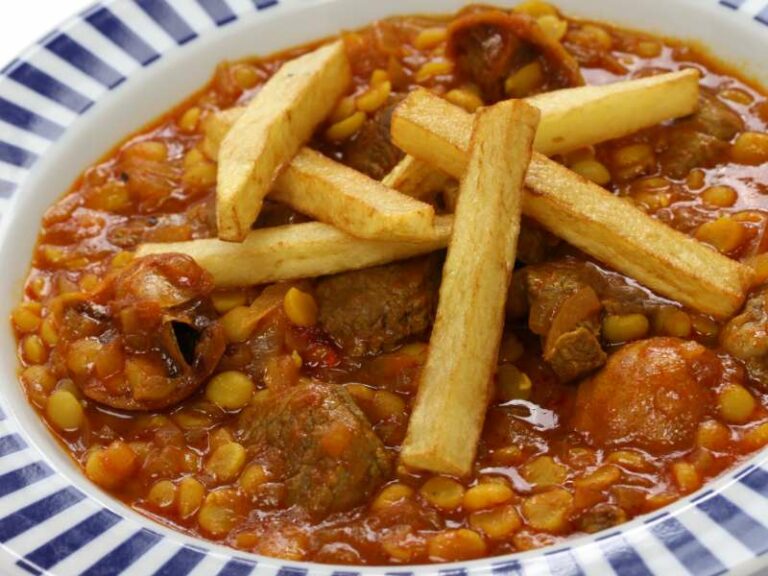Korean Sundae Blood Sausage Recipe

Sundae, also known as Soondae or Blood Sausage, is a popular Korean dish prepared by steaming cow or pig intestines filled with various ingredients such as dangmyeon (glass noodles), vegetables, rice and the cow or pig’s blood.
Blood Sausage is one of the most popular street foods in both South and North Korea. Despite a sausage filled with blood sounding like a particularly unusual food, variations of the dish are eaten all over the world including in the UK (black pudding).
Although, many people consume this dish as a simple snack, there are many different ways to consume the delicacy in Korea alone.
History & Cultural Significance

Blood sausages date back to the Goryeo period (918-1392) when the dish was made using minced meat and was consumed during festivals and holidays. After the end of the Korean War, there was a huge scarcity of meat and so dangmyeon became a common replacement for meat fillings.
Recipes for Korean Sundae can be found in many famous nineteenth century cookbooks including Gyuhap chongseo and Siuijeonseo. Today, the Korean blood sausage has become popular enough to be easily found in traditional Korean restaurants and roadside eateries around the country.

Korean Blood Sausage (Sundae) Recipe
Soondae or Blood Sausage is a popular Korean dish prepared by steaming cow or pig intestines filled with various ingredients such as dangmyeon (glass noodles), vegetables, rice and the cow or pig's blood.
Ingredients
- Pork small intestine - 3 feet
For Stuffing:
- Sweet Rice - 2 cups
- 12 ounce package of sweet potato starch vermicelli - 1/2
- Garlic cloves - 3
- Knob of fresh ginger– 11 inch
- Salt - 1 teaspoon
- Pepper - 1/2 teaspoon
- Korean toasted sesame oil - 1 tbsp
- Sesame seeds - 1 teaspoon
- Scallions - 5
- Beef or pork blood - 2 cups
Instructions
- Take a medium sized bowl and add rice. Pour enough water to soak the rice completely. Keep aside for about 30 minutes. Until water runs clear, keep rinsing the rice with cold water.
- Now, take a rice cooker and put rice in it with 1/4 cup less water than what the standard cooking instructions demand. If cooking on a stove top, take a cooking pot and add rice to 3 1/2 cups water. Immediately decrease the heat to low after bringing the water containing the rice to a boil. Place a lid on the pot and reduce the heat to simmer for about 45 minutes. Take the pot away from heat, fluff with a fork, and keep the pot aside for a little while to cool down.
- Next, take the pork intestine and thoroughly clean it using slightly warm water. Rinse it through one end and squeeze gently through the other. Now, wash the intestine with cold water, and then soak it in salt-water solution (make sure to add just a pinch of salt)for about an hour.
- You can either cut the intestine into 1-foot sections or use the whole according to your preference. Close using cotton string after tying one end of each section.
- In lukewarm water, soak the noodles until soft. Once soft, roughly chop it. Now take the scallions and finely chop them. Take a pan and over medium-high flame, dry toast the sesame seeds until golden brown. Using a mortar and pestle, crush the seeds.
- Take a large mixing bowl and mix garlic, ginger, sesame seeds and all stuffing ingredients together.
- Now take a funnel or sausage stuffing machine and stuff each section lightly. Make sure to not pack the stuffing too tightly or else the sausage may crack open while cooking. Using cotton strings, tie
off the open ends if there’s any. - Take a pot and put sausage into it. Cover it with salt water solution where 1 teaspoon of salt is added to a quart of water. Boil it and
then reduce the heat to simmer. Remember to not cover the pot and let it boil for about 45 minutes. - Insert a toothpick/skewer into the sausage and make sure it comes out clean. That will determine that it’s completely cooked.
- Cut off the cotton strings and serve warm with mixed salt and pepper, and one of gochujang for dipping.
Nutrition Information:
Yield: 5 Serving Size: 1Amount Per Serving: Calories: 597Total Fat: 14gSaturated Fat: 4gTrans Fat: 0gUnsaturated Fat: 8gCholesterol: 64mgSodium: 530mgCarbohydrates: 82gFiber: 6gSugar: 3gProtein: 36g






